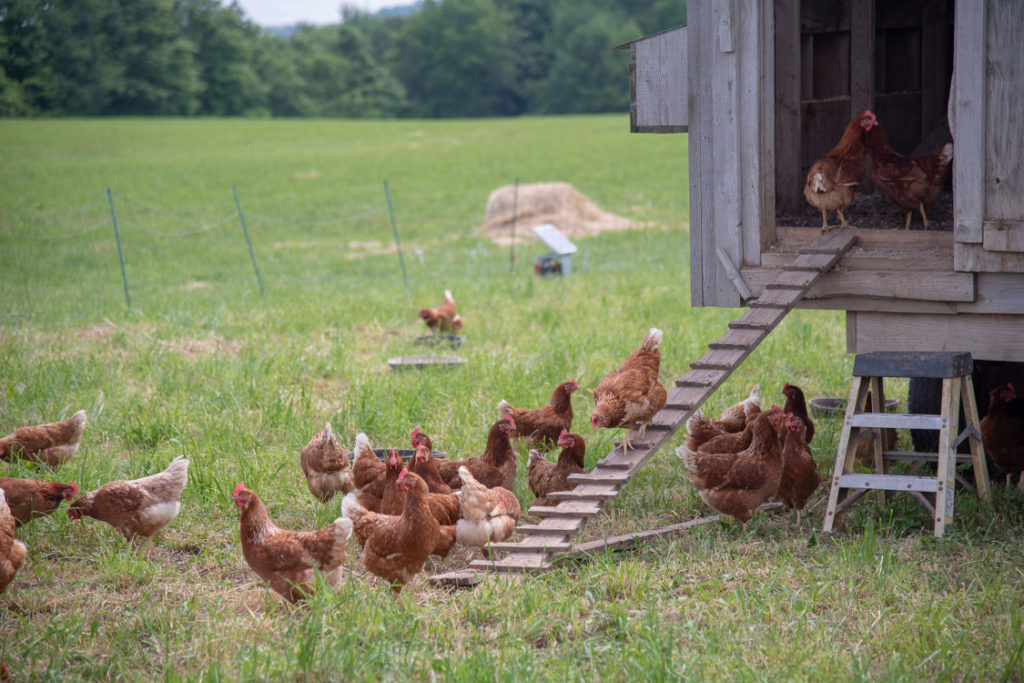In the News: COVID-19 Reveals Slaughterhouse Shortages

Even if farmers are able to increase their production of meat, they often can’t find an available slaughterhouse to get it processed.
RJ Anderson / Cornell Cooperative Extension
Finding a slaughterhouse to process meat has been a challenge for small farmers for years. Federally inspected slaughterhouses are few and far between, and in many parts of the country, it takes driving long distances — often multiple hours, both ways — to reach one. This shortage is often attributed to the consolidation of processing plants, which has been rapidly occurring since the 1980s and has led to a sharp decrease in the number of plants. As of 2020, the USDA reported that there are currently 837 federally inspected meatpacking plants in the United States — a whopping 36% decrease from 1990.
Unfortunately, as COVID-19 has swept through the country, this consolidation has proven to be a major issue. An increase in consumer demand for local meat has offered producers more marketing opportunities, but as they have rushed to meet this new demand, they have encountered a roadblock: a processing bottleneck, where many local meatpacking plants are completely booked for the season.
“Because of COVID and the massive influx of new customers wanting to source their meat from local farms … facilities are booked solidly for months,” Erica Frenay, livestock specialist and online course manager for the Cornell Small Farms Program, told Foodprint.
This backlog has resulted in farmers booking slaughter dates so far in advance that it often doesn’t reflect how ready the animal actually is to be processed.
Frenay is also a farmer at Shelterbelt Farm, and shared with Foodprint how she will schedule slaughter dates as far in advance as possible.
“From the time a calf is born until slaughter is between 20 and 30 months; I book slaughter date as soon as I get the calf…and all of the information about when an animal is finished with the right amount of fat cover all goes out the window because the butcher date is immutable,” Frenay said. “When I sent cattle this past January, it didn’t matter if they were properly finished … I feel like the meat was good quality but the quality was not the deciding factor nor was economics … it came down to when I could get the animal processed.”
Luckily, farmers, processors, and legislators are working to find creative solutions to the shortage. Some farms have turned to processing animals on-site, which can be a good fit for poultry farmers that fall under the 1,000 bird exemption. When it comes to larger animals, the use of mobile slaughter units, which can provide USDA-inspected slaughter on-site without the infrastructure investment, is becoming increasingly common. Lastly, many states are passing legislation that would address the root cause of the shortage, hoping to bolster local slaughterhouses with grant money.
Information for this article was drawn from this article in Foodprint.

